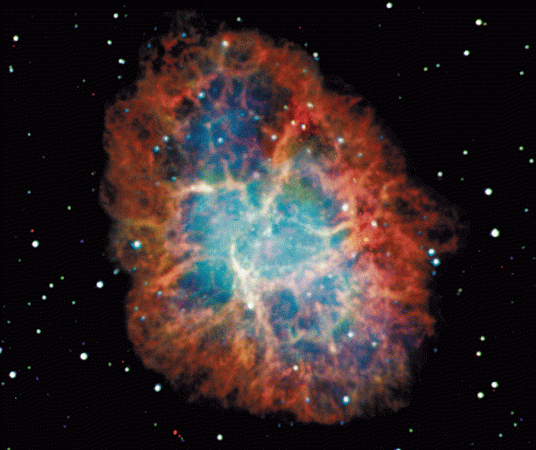Models suggest cosmic rays can trigger reactions in interstellar ice balls causing formation of more complex molecules
A team of researchers with affiliations to several universities in the U.S. has found evidence that suggests that cosmic rays striking balls of ice floating around in interstellar clouds can cause the formation of more complex molecules, possibly including those that are believed to be precursors to life. In their paper published in Proceedings of the National Academy of Sciences, the team describes their systematic approach to the study of the ice balls that exist between stars, what they found, and other evidence that supports their ideas.
Cosmic rays are energetic atomic nuclei or other types of particles that travel very rapidly though space, most are believed to be created when supernovas explode. In this new effort, the researchers wondered what might happen when such rays strike bits of ice that float around in interstellar clouds.
To begin, the researchers noted that it is believed that space ice-balls are formed when atoms collide with bits of dust made of silicate or other carbon rich material—due to the extreme cold, the atoms adhere to the surface, eventually over time, building up layers of carbon dioxide, water, methane, ammonia and a host of other materials that exist in the cloud.
To better understand what happens when cosmic rays strike such ice-balls, the researchers conducted experiments, did some heavy computing and built models to simulate what likely occurs. In so doing, they discovered that the cosmic rays had enough energy to cause the atoms in the ice to bond with one another, forming molecules—even complex organic molecules. Their studies also showed that such reactions were possible even at temperatures as low as -263°C. They suggest their results could answer the question of how biological molecules come to exist on planets, such as Earth.
The researchers note that prior research has shown that complex organic molecules do actually exist in interstellar clouds. They also point out that researchers studying data sent back from the Rosetta probe found evidence of organic molecules in a comet, one that is believed to have formed in the Kuiper Belt, an area of space very similar to that used in the models created by the research team.
Source: Phys.org

































Leave a Comment
You must be logged in to post a comment.